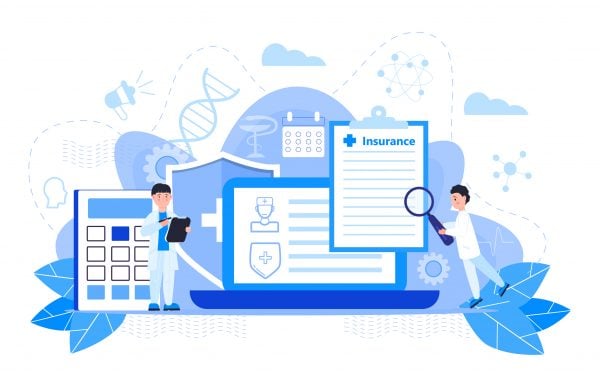4 min read
Denial Prevention: The Fundamentals to Increasing FQHC Revenue
Jayson Meyer Jun 20, 2023 7:30:00 AM


Very few industries have a 90-day lag from receipt of the product or service to payment. When you go into a grocery store, they expect payment before you leave. Even other service providers such as your cable company provide the service in advance, but if you don’t pay, they shut off your cable. As a community health center, you are treating the most vulnerable populations and you cannot simply cut-off access to care. Your providers work hard and it is critically important to the viability of your health center that you get paid for providing care.
In healthcare, time is money – every day that goes by the clock is ticking. Not to mention that 30% of all FQHC visits are denied by insurance at first submission. This increases the cost from an average of $6.50 per patient encounter to $31.50! An ounce of prevention is worth more than a pound of prevention. Read on to find out how you can reduce denials and increase revenue for your FQHC.
The Good Intentions Mindset
If you are like the majority of health centers, you and your staff are buried in administrative tasks that range from scheduling patients, remaining compliant with regulations, and trying to find qualified providers and employees to serve your community. Finding FQHC billing specialists can be like finding a unicorn in the desert. They just don’t exist. Coders and billers have limited time to question documentation or services performed. Rather it’s common for staff to get claims sent to payers and then cross their fingers and move on to the next stack of tasks.
Does this sound familiar?
Most FQHCs struggle to just stay on top of the day-to-day operations, the ramifications can be financially devastating. The average denial rate for most CHCs ranges from 20% to 30%. For an average health center (80,000 insurance visits annually), this results in 1,300 – 2,000 denials per month. Even at a charge of $100 per claim, this equates to $130,000 – $200,000 a month in denied charges – not to mention any rework costs on average $25 per claim.
The Shift from a Reactive to Proactive Process
When a claim denies it takes an average of 15-30 minutes to correct it. For the average health center, this can add up to 600 hours each month just to keep pace. Meanwhile, our data has shown that 90% of denials are preventable.
Doctors ask their patients to get vaccines or wear sunscreen or eat less sugar to prevent disease and sickness in the future; however, many health centers do not subscribe to the same prevention strategies when dealing with their own financial future. While it seems overwhelming at first, setting up proper operational processes upfront will save both time and money.
But how to prevent denials and where to start is often the challenge.
Training and Education
Insurance and Eligibility
Payers and Credentialing
Coding and Documentation
Technology and Automation
Measure What You Manage
Training and Education
This is often the key to success in any business and in healthcare specifically, you must educate and communicate both internally and externally. It’s essential that your front office staff, doctors, and back office staff all know their role in your health center’s operations. Each plays a critical component from checking in patients to documenting the services provided to collecting patient payments.
In addition, everyone must know the insurances you accept, the services you provide, and the services you do not provide.
In addition, continuing education and updated certifications will keep your health center operating at par with the latest changes in healthcare.
Insurance and Eligibility
It’s been said before, but one of the main reasons for denials is due to eligibility. While the patient may have been coming to your health center for over 10 years, this does not mean they have the same insurance. People change jobs and insurance companies require yearly enrollment. With more and more managed care entering the scene patients can switch plans as frequently as monthly! Not to mention, they can be assigned to another PCP which requires authorization ahead of time.
Many plans now have more financial responsibility being placed on the patient. Whether it’s a raise in deductible or increased copayment, you need to check each patient’s insurance benefits prior to every single visit. This is especially true of Medicaid and Medicare programs as well. A fluctuation in income can result in a patient having Medicaid for a period of months and then having commercial insurance the next.
Know Your Payers and Credentialing
Most health centers will accept anywhere from 20-25 different insurance plans. Each of these payers has various rules for what services they allow and what they will reimburse. In addition, they require each provider to enroll n their plan before they will reimburse them. Often times, they need to be “linked” to each location, as well.
It takes time – and often patience – to learn which services are considered medically necessary, which require prior authorizations, which require referrals, and so on. Having a relationship with your key payers helps you resolve issues faster. “It’s all about who you know” holds true in healthcare. Being on a first-name basis with your provider reps can help you get the answers you need in a timely manner.
Coding and Documentation
While transcription and hand notes are faster, they can result in miscommunication that has huge financial repercussions. What the provider meant in the documentation or transcription versus what was coded may be different. Clear documentation, especially when electronic, helps ensure proper coding is completed the first time. This is why it is so important that your Electronic Health Record (EHR) software templates are set up properly. This can be the difference between getting claims paid and having them denied.
Technology and Automation
Unfortunately, many health centers do not take full advantage of what their EHR or Practice Management System offers. Most systems now provide built-in edits that review claims before they get sent to the payer. These will flag your staff to review the claim information before sending the final claim to the payer. This immediate notification prevents denials by pushing the edit and review tasks earlier in the revenue cycle process – saving days and even weeks.
Measure and Manage
Perhaps one of the most important steps in preventing denials is learning from past mistakes. While this step is the most important it is often the most overlooked. It’s difficult to take time out of your busy day to review what’s already been done; however, if you don’t look at why you are getting denials you will keep making the same mistake. By changing an incorrect modifier or correcting an inaccurate birth date before a claim leaves the office, a provider not only gets paid faster but avoids unnecessary denials.
Make sure your health center knows:
Which payers deny the most claims?
What are their top denial reasons?
What are the ways we can prevent these denials from occurring?
Implementing Changes
Change is hard. And in healthcare – it’s frequent. It requires the entire health center to be onboard and working together. Analyzing the revenue cycle process and moving key components further up in the process can ultimately be the deciding factor of whether a health center is financially viable.
To affect real change requires true leadership. If the leader embraces change, then the organization will naturally follow.

3 Common RCM Challenges for Federally Qualified Health Centers
Jayson Meyer : Apr 11, 2023 7:00:00 AM
To provide high-quality, accessible healthcare services to underserved populations, Federally Qualified Health Centers (FQHCs) need reliable and...

Strategies For Reducing & Eliminating Bad Debt At Your FQHC
Jayson Meyer : Mar 8, 2023 9:00:00 AM
Bad debt expenses make up a major part of operating costs for most community health centers — but do they have to? As FQHCs, we are accustomed to...


